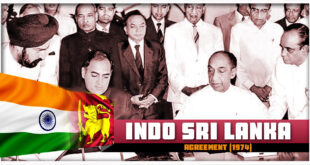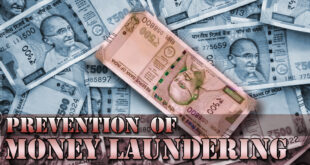Even though domestic inabilities will continue to moderate
New Delhi’s ability to influence the world order, being unwilling to be a ‘global rule shaper’ would be a strategic blunder
Notwithstanding the (equally faulty) hyper-nationalist and deeply-pessimistic narratives, the story of the rise of India, and the attendant challenges, must be proactively and critically engaged — for the kind of power India would become will not only define the future of the world in important ways, but, most definitely, shape the destiny of its 1.4 billion (and growing) citizens.
Ignoring or dismissing the global consequences of a rising India’s power is unwise, but doing so without being rooted in the realities of the country’s inherent limitations would be a strategic blunder.
Power and its consequences
Let us start with the India of 1991 — a weak, poor, and deeply beleaguered country with a foreign exchange reserve of $5.8 billion and a nominal GDP of $270.11 billion. For a population of 846 million, around 50% of whom were poor, those were miserable figures. Despite efforts to diffuse fears of a nuclear war, prospects of an India-Pakistan clash loomed, and violence in Kashmir was at its peak. The collapse of India’s trusted partner, the Soviet Union on the one hand, and strained relations with the United States on the other further weighed on the country’s ruling elite. American officials kept a close watch on India and Pakistan and their nuclear plans, and occasionally travelled to the subcontinent to counsel the cantankerous neighbours.
Fast forward three decades to 2023. India’s foreign exchange reserve has grown to around $600 billion, and a war with Pakistan is not something Indian leaders lose sleep over — China has taken that place though — and there is a general sense of foreign policy optimism. The reforms initiated after the 1991 economic crisis not only led to higher GDP growth but also significant poverty reduction.
Ranked as the world’s fifth largest economy, India’s nominal GDP could soon touch $4 trillion; it has one of the largest militaries in the world with over a hundred nuclear weapons. The U.S. is now one of India’s closest friends, and New Delhi enjoys strong relationships with several powerful states around the world. The visionary investments made over the past several decades are now beginning to bear fruit with a permissive external atmosphere for the country’s rise.
India is also one of the pivotal swing powers of the contemporary international system, strategically located, and often playing both sides with great elan. The great power politics around the Ukraine war brought renewed focus on India’s role in world politics. The U.S. and the wealthy West want India to be on their side. An embattled Russian Federation is doing everything it can to ensure India does not turn its back on Moscow. There are serious suggestions that India should mediate between Ukraine and Russia to bring an end to the war.
New Delhi, increasingly, uses the language of mediation in global crises and being a bridge between the north and south and east and west, indirectly indicating that it is a major ‘pole’ in world politics. Although tens of millions of people in India still live in poverty, the country’s national power has increased dramatically, making it a force with system-shaping capabilities and intentions. Whether New Delhi is actually punching above its weight or not is something only time will tell.
Other side of the great power story
Despite being the fifth largest economy in the world, its GDP per capita was $1,947 in 2021 whereas that of Bangladesh, at $2,227, was more than that of India even though Bangladesh is only the 40th largest military in the world. The argument from this comparison is a well-known one: GDP and military strength do not equal the well-being of a country’s citizens. But at the same time, the well-being of a country’s population does not equal to the gross material power that a state can bring to bear in its foreign and security policies.
India is also beset with major infrastructural and governance issues: ease of doing business may have improved, but starting a business without a bribe is still not easy. A few days of rain brings the national capital to its knees, year after year. Regional, caste, ethnic and religious divisions run deep. India’s domestic challenges will continue to distract the attention of its political leaders from attending to global problems. For the Indian politician, foreign policy is a luxury she/he cannot afford.
One of the most pressing concerns for India’s political class is to reduce poverty and improve the well-being of millions of Indians living under the poverty line, a task that is bound to divert its attention from serious external engagements. When the political class gives scant attention to the country’s foreign and security policy, as it usually happens in the case of India, it is managed by career bureaucrats who usually do not diverge from precedents and avoid taking even remotely risky decisions. Without political will, foreign policy tends to be on autopilot.
The presence of a weak economy also tempers the Indian elite’s appetite for external engagement. Over time, the appetite has grown, but that does not change the fact that the political class can only allocate so much attention to foreign and security policies if the country is economically weak and large sections of the population are living in poverty.
More so, a weak domestic economy prevents politicians from allocating adequate resources for foreign policy objectives. For instance, the Parliamentary Committee on External Affairs (2022-23) observed that “despite an increase in the overall budget allocation of the Government of India, the allocation made to MEA [the Ministry of External Affairs] in percentage terms has witnessed a downward turn during the last four years and during 2022-23 it is only 0.44% of the Government of India’s overall Budget.” The committee further said we “do not find such allocation in consonance with the country’s rising aspirations and growing global stature”. Perhaps the country is simply unable to do so.
The combined effect of such domestic challenges is likely to be a political elite distracted by more immediate domestic considerations rather than the grandeur of great power status.
Embrace power
So, should India refrain from shaping the global order until its domestic challenges are resolved, as the pessimists would have it? Or should India continue to assert its place in the world and aspire to be a great power?
Even though India’s domestic inabilities will continue to moderate its ability to influence the world order befitting of its size and ambition, being unwilling to engage and shape it would be a strategic blunder. If you are not a rule shaper, you are a rule taker. India has no choice but to influence and shape the global order to meet its foreign policy objectives which would have significant impact on its economic growth, security environment and geopolitical and geo economic interests. Be it debt restructuring, climate change, global trade or non-proliferation, New Delhi can ill afford to let someone else make the rules and abide by them. Whether it likes it or not, India’s impact on the world order is a given, and, in a globalised world, the relationship between a state’s global influence and domestic growth is an unavoidable one.
India’s ability to shape international politics must also be a reflection of its domestic context, and its global engagement must necessarily be geared towards the well-being of its people. Neither is strategic autarky an option nor is India’s assertiveness on the global stage a matter of nationalistic hubris or officious vanity.
 Chinmaya IAS Academy – Current Affairs Chinmaya IAS Academy – Current Affairs
Chinmaya IAS Academy – Current Affairs Chinmaya IAS Academy – Current Affairs



